![]()
![]()
![]()
Use LEFT and RIGHT arrow keys to navigate between flashcards;
Use UP and DOWN arrow keys to flip the card;
H to show hint;
A reads text to speech;
58 Cards in this Set
- Front
- Back
- 3rd side (hint)
|
What is meant by SOCIALIZATION?
|
The process by which a child learns to become an active and competent member of their community.
|
|
|
|
What is meant by the term 'social practices'?
|
Activities shaped by cultural beliefs and values, such as,
disciplining children, teaching them tasks, preparing for gendered adult roles |
Study Guide 2 p. 8
|
|
|
LAISSEZ-FAIRE - Romantic
CLAY MOULDING - Blank slate CONFLICT - Puritan MUTUALITY - Small people |

Psychologist RUDOLPH SCHAFFER
4 models of child rearing practices |
p. 11
|
|
|
LAISSEZ-FAIRE
|
Concept of child - preformed
Parental practice - leave alone |
p. 11
|
|
|
CLAY MOULDING
|
Concept of child - passive
Parental practice - Shaping & training |
p. 11
|
|
|
CONFLICT
|
Concept of child - anti-social
Parental practice - Discipline |
p. 11
|
|
|
MUTUALITY
|
Concept of child - participant
Parental practice - Sensitivity & responsiveness |
p. 11
|
|
|
Child rearing & SOCIALIZATION THEORY
|
Child rearing practices will affect how a child is treated. Practices are shaped by discourses about children i.e. blank slate/requiring strong discipline
|
p. 17
|
|
|
How does socialization happen?
|
Through learning about EMOTIONS e.g. Utku community, N Canada - adults do not express anger
Through LANGUAGE & GUIDED PARTICIPATION e.g. helping children to become competent in tasks; (Link ROGOFF & VYGOTSKY) Through COMMUNITY PRACTICES e.g. Children's work roles become more complex as they become more physically able - SAM PUNCH - Rural community in Bolivia Through CHILDREN'S ACTIVITIES e.g. school - experiences structured by curriculum / work develops identity |
p.18
|
|
|
In what ways to children play an active role in their own socialization?
|
Children develop sense of own identity. Choose own activities and relationships. May resist actions of adults around them. e.g. BILKIS expresses autonomy - making own choices; CATHY chooses to educate younger children, does not agree with fathers low aspirations for her.
They explore, question and resist socialization. |
p. 8
|
|
|
What kinds of change & discontinuity might children have to cope with in the course of their socialization?
|
Discontinuity between home to school e.g. language, culture differences
Being treated differently due to race, gender & social class e.g parents/teacher have differing views of same child |
p.30
|
|
|
What is a family, and who is included in a family?
|
Family very flexible concept which differs across cultures and across time (socially constructed).
Familes come in a variety of forms e.g step, single parent, gay.. |
|
|
|
'a group of persons directly linked by kin connections, the adult members of which assume responsibility for caring for children'
|

Sociologist ANTHONY GIDDENS defines family as...
|
|
|
|
How does time & place affect ideas about what a family is, or should be?
|
Ideas of family are socially constructed i.e. they differ across cultures and change over time e.g NUER - emphasise social links not biological ones. Traditionally European kinship emphasizes biological links.
ASSISTED CONCEPTION - profound affect on family formation - re-emphasizes biology as marker of kinship. Ideas about family are often full of IDEALIZATION. |
p. 46
|
|
|
How do children take an active role in shaping the dynamics of the family?
|
By claiming or rejecting kin e.g Sophie also considers lesbian mothers partner as her mother.
|
|
|
|
Foster carers - substitute family
Institutional care - may provide stability or cause insecurity & distress. |

What happens to children without a family to care for them?
|
|
|
|
HOW has child labour been restricted in Britain during the past 200 years?
|
1874 - Factory Act raises minimum working age to 9. Children up to 14 to work 1/2 days.
|
See Timeline page 112
|
|
|
WHY has child labour been restricted in Britain?
|
Changing attitudes
- cultural aversion to children working. - high value placed on childhood - 'Romantic discourse' - education seen as child's 'work'. |
|
|
|
1880 Education Act - Compulsory for children between 5-10 years.
Introduction was gradual - some parents were opposed. Attendance officers persuaded parents to allow their children to attend school. Until 1916 parents prosecuted for non-attendance of their children. |

HOW has compulsory schooling been introduced in past 200 years?
|
p. 97
|
|
|
Growing concern that many children were not receiving an education.
|

WHY has compulsory schooling been introduced in past 200 years?
|
|
|
|
WHEN was the Compulsory School leaving age raised to 14 and then 16?
|
1918 Education Act - School leaving age of 14 enforced
1973 Education Act - School leaving age of 16 enforced |
|
|
|
Worked in agriculture, factories, textile mills & mines.
|
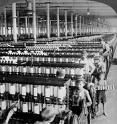
What part did children play in the British economy BEFORE industrialisation?
|
|
|
|
Worked on margins of industrial economy e.g servants, street sellers, van-boys.
|
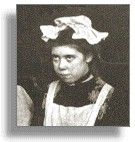
What part did children play in the British economy AFTER industrialisation?
|
|
|
|
How has the concept of childhood changed in the last 200 years?
|
Schooling has replaced work as the child's primary obligation.
Childhood became seen as a time when children should be free from responsibilities (Romantic discourse, encouraged by poets such as Blake & Wordsworth) |
p. 110
|
|
|
How many children are there in the world & what proportion do not attend school?
|
Oxfam estimate 625 million primary school age (6-11)
1/5th - 125 million DO NOT attend school |
p. 137
|
|
|
In what ways does the schooling experience vary around the world?
|
- In developing world schools often outdoors or in dilapidated buildings
- proportion of children who enter varies from country to country & within regions - ratios of girls / boys (generally more boys attend school) - Schooling greater quality in the North |
p. 139
|
|
|
MANIFEST & LATENT FUNCTIONS
|

Which terms were introduced by sociologist ROBERT K MERTON (1957) to define the 2 main SOCIAL FUNCTIONS of schooling?
|
p. 142
|
|
|
Define the term MANIFEST FUNCTION of schooling
|
Obvious - what people usually think of as the purpose of education
|
p. 142
|
|
|
Define the term LATENT FUNCTION of schooling
|
Hidden - effects are important but not intended & may not be recognised. Sometimes latent functions act against manifest ones.
|
p. 142
|
|
|
Examples of MANIFEST FUNCTIONS of schooling
|
- gaining knowledge & skills
- fosters religious beliefs & sense of community - identifies & encourages talents |
p. 143
|
|
|
Examples of LATENT FUNCTIONS of schooling
|
- Catagorises pupils based on merit (ie. rigorous testing)& directing them to future employment e.g working class boys manufacturing industry (Willis)
- allows adults to work - interpreting school as a childs 'work' (QVORTRUP) |
p. 148
|
|
|
RONALD DORE
THE DIPLOMA DISEASE (1976 & 1997) |

Who argued that the testing and qualification function displacing the teaching & learning function - especially in South (e.g. JAPAN)?
|
p. 149
|
|
|
What did RONALD DORE argue?
|
- Teaching is geared to final exam
- Pupils pursue higher qualifications than are actually needed for job due to increased competition from people with a suitable qualification. |
p. 150
|
|
|
Who researched working-class boys disaffection with school?
|
PAUL WILLIS - LEARNING TO LABOUR (1977)
|
p. 156
|
|
|
- Found a counter culture of resistance to school
- Lads see their future in manual work due to parents expectations & lads counter-culture. - LATENT FUNCTION of schools is to direct them to unskilled work |

What did PAUL WILLIS argue based on his ETHNOGRAPHIC study?
|
p. 161
|
|
|
Arguments against PAUL WILLIS view
|
- Lack of qualifications mean lads only option is to take unskilled work
|
p. 161
|
|
|
What is meant by children's 'work'?
|
- Paid employment or money-making tasks inside or outside the home
- Unpaid home maintenance / childcare, for at least 10 hours a week (BOYDEN et al) |
p. 177
|
|
|
Can only estimate due to different ways governments define work. International Labour Organisation (ILO) ESTIMATE 250 MILLION
|

What proportion of children work in the world today?
|
p. 177
|
|
|
- Unpaid help to families, mostly in agriculture
- Domestic child workers & baby-minders (mostly girls) - 'Informal sector' - shops & stores, street-selling - 'Formal sector' modern, large factories, making goods to export abroad |

What kinds of work do they do?
|
p. 178
|
|
|
How does this vary between different parts of the world?
|
SOUTH - vast majority agriculture or domestic workers
NORTH - typically service sector, part-time & poorly paid (e.g paper round, fast-food shops) |
p. 180
|
|
|
What are the main benefits of children's work?
|
- Provides family with an income
- Unpaid work contributes to family economy - Children find enjoyment and fulfilment in their work |
(Martin WOODHEAD - Video 2, Band 4)
p. 198 |
|
|
- Constructed a model of an 'idealized child' based on their own countries. This model sees childhood as a time of care, learning & play at least until adolescence.
Pschologists beginning to study child development within diverse contexts, including work (WOODHEAD, 1999) |

What did MARTIN WOODHEAD argue that developmental psychologists in America & Europe have done?
|
p. 192
|
|
|
What are the main drawbacks of child work?
|
- Children's work is 'unnatural' (Romantic discourse)
- Work interferes with development : damage health / robbed of childhood - Can be dangerous - Interferes with schooling - Maybe mistreated |
p. 193-4
|
|
|
What are the origins of early education in relation to school systems?
|
Friedrich FROEBEL - set up first kindergarten, Germany 1847
Margaret McMILLAN - Early Childhood project/nursery, London 1914 Maria MONTESSORI - slum nursery, Rome 1907 |
p. 224
|
|

In what ways is early childhood education seen by governments as an investment?
|

1964 - American Head Start programme.
1999 - UK Surestart Programme. Both aim to break cycle of disadvantage by promoting the development of babies & young children. |
p. 227
|
|
|
- Goal lead curriculum - set of steps
- 'Leading into school type' curriculum model (Angela Anning) |

What is the emphasis of the FOUNDATION STAGE CURRICULUM (England)?
|
p. 236
|
|
|
- envisaged as woven mat 'supporting' child in their early development - flexible developmental sequence
-'Spider web' curriculum model |
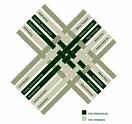
What is the emphasis of TE WHARIKI CURRICULUM (NZ) ?
|
p. 241
|
|
|
- No curriculum framework
- Collaborative approach - children, parents & pedagogues (teachers) |
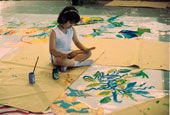
What is the emphasis of REGGIO EMILIA APPROACH (region of Northern Italy) ?
|
p 243
|
|
|
What are RITES OF PASSAGE
|
RITUALS marking the transition from one status or life stage to another
(Studied by VAN GENNEP 1909) |
p. 270
|
|
|
Give examples of Rites of Passage in the South
|

Sub-Saharan Africa
XHOSA male circumcision TANZANIA female circumcision |
p. 276
Video 2 Band 5, Theobale |
|
|
Give examples of traditional ceremonies that mark the transition to adulthood in the North
|
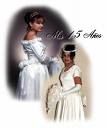
QUINCEANERA - e.g Karen's cousin
18th/21st BIRTHDAY PARTIES BAR MITZVAH DEBUTANTE BALL |
Video 2 Band 5, Quinceanera
|
|
|
Social change (lack of certainty re. employment/unstable families) has led to young people becoming self-centred, detached from families & taking risks (e.g fast cars/teenage pregnancy)
|

What is ULRICH BECK's THEORY OF INDIVIDUALIZATION?
|
P. 277
|
|
|
ARGUMENTS AGAINST Beck's theory
|
Beck overstated affects of social change
Young people still influenced and depend on family for support. Social class, gender & ethnicity structure young people's lives. |
p. 277
|
|
|
During PUBERTY physical changes take place & IDENTITY is formed, which results in an individual but one who can live by societies rules
|

What is ERIK ERIKSON's THEORY (1968) on the transition to adulthood in the WEST?
|
p. 276
|
|
|
ARGUMENTS AGAINST Erikson's Theory
|
Not everyone becomes an 'unitary individual subject' i.e totally independent - this is an 'ideal type'
Adults are frequently interdependent on support of family. Some children support adults e.g 10 year old Shaun caring for mother Challenges idea that adulthood is a time of independence. |
p. 281
|
|
|
What factors influence the transition from school to work (& adult independence)?
|
Social class - directed to low paid jobs
Dis/ability - may still be relient on family, discriminated against when looking for work Gender - enter traditionally male/female jobs Ethic background/Religious beliefs - discriminated against, family place restrictions |
p. 289
|
|
|
UK - carry on as normal
Waiwai (Amazonian tribe)- menstruation huts - girls secluded for 2 months & then emerges to be given white beads as a sign of maturity |

Give examples of how physical changes at puberty are dealt with across different cultures
|
p. 292
|
|
|
Give examples of when young people may 'feel' like an adult
|
- when they have a boy/girl friend
- when they start to be sexually active - realising & acknowledging to others that they are gay |
p. 296
|

